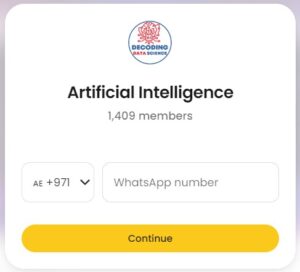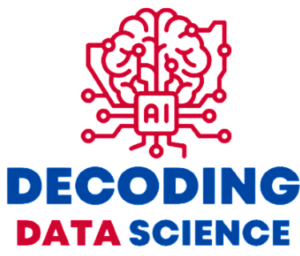Standardization plays a crucial role in statistics, providing a framework to make data comparable, interpretable, and analytically meaningful. It allows statisticians and researchers to transform data into a common scale, facilitating accurate analysis and interpretation. In this article, we will explore the concept of standardization in statistics, its importance, key concepts, steps for standardizing data, advantages, applications, limitations, and more. So let’s delve into the world of standardization statistics and unravel its significance in the field of data analysis.
Introduction to Standardization Statistics
Standardization, also known as normalization, is a statistical technique that transforms data to have a predetermined mean and standard deviation. It aims to create a common scale for data points, enabling meaningful comparisons and analysis. By standardizing data, we eliminate the differences in scales and units of measurement, making it easier to interpret and draw accurate conclusions.

Importance of Standardization in Statistics
Standardization is of paramount importance in statistics for several reasons. Firstly, it enables us to compare data that have different units, scales, or measurement ranges. This comparability is crucial when dealing with diverse datasets and variables. Secondly, standardization allows us to identify outliers, which are data points that deviate significantly from the average. By standardizing data, we can easily spot these outliers and investigate their potential causes. Lastly, standardization facilitates data normalization, making it easier to analyze and interpret the results consistently.
Key Concepts in Standardization Statistics
Definition of Standardization
Standardization refers to the process of transforming data into a standard scale by adjusting the mean and standard deviation. It involves subtracting the mean from each data point and dividing the result by the standard deviation. This transformation results in a new dataset with a mean of zero and a standard deviation of one.

Standardized Score (Z-Score)
The standardized score, commonly known as the Z-score, is a statistical measure that quantifies how many standard deviations a data point is from the mean. It is calculated by subtracting the mean from the data point and dividing the result by the standard deviation. The Z-score provides valuable information about the relative position of a data point within a distribution.
Standardized Distribution
A standardized distribution is a transformed dataset that has been standardized, resulting in a mean of zero and a standard deviation of one. This distribution is often represented by a bell-shaped curve known as the standard normal distribution or the Z-distribution. It serves as a benchmark for comparing and analyzing data across different variables.
Steps for Standardizing Data
Standardizing data involves a series of steps to ensure accurate transformation and interpretation. The following steps outline the process of standardizing data:
- Calculate the Mean: Find the average value of the dataset.
- Calculate the Standard Deviation: Determine the measure of variability around the mean.
- Calculate the Z-Score: Subtract the mean from each data point and divide the result by the standard deviation.
- Interpret the Standardized Score: Analyze the Z-scores to understand the relative position of each data point within the distribution.
Advantages of Standardization Statistics
Standardization statistics offer several advantages that contribute to the field of data analysis. Firstly, it allows for the comparability of data. When working with datasets that have different units or scales, standardization provides a common ground for meaningful comparisons. Secondly, standardization helps in identifying outliers. By standardizing data, outliers become more apparent, aiding in the investigation of unusual observations. Lastly, standardization enables data normalization, ensuring that variables with different ranges or distributions can be analyzed and compared accurately.
Applications of Standardization Statistics
Standardization finds applications in various fields where data analysis and interpretation are crucial. Some key areas where standardization statistics are applied include:
Quality Control
In quality control processes, standardization plays a vital role in ensuring consistency and reliability. By standardizing measurements and comparing them to established benchmarks, organizations can identify deviations and take corrective actions to maintain quality standards.
Educational Testing
Standardization is widely used in educational testing to assess the performance of students. By standardizing test scores, educators can compare individual performance against a standardized distribution, providing a meaningful basis for evaluation and ranking.
Financial Analysis
Standardization is employed in financial analysis to compare and analyze financial data across different companies or industries. By standardizing financial ratios or performance indicators, analysts can identify trends, make accurate comparisons, and evaluate the financial health of entities.
Limitations of Standardization Statistics
While standardization offers significant advantages, it is essential to consider its limitations. Standardization assumes a normal distribution of data, which may not always hold true. If the data is heavily skewed or has extreme outliers, standardization may not accurately represent the underlying patterns. Additionally, standardization can potentially lose information about the original data, particularly when dealing with highly complex datasets.
Conclusion
Standardization statistics are a vital tool in the field of data analysis. By transforming data into a standard scale, standardization enables meaningful comparisons, identification of outliers, and data normalization. It finds applications in diverse fields such as quality control, educational testing, and financial analysis. However, it is important to acknowledge the limitations of standardization and consider the characteristics of the dataset before applying this technique. By understanding and utilizing standardization statistics effectively, researchers, analysts, and statisticians can unlock valuable insights and make informed decisions based on standardized and comparable data.
FAQs
- What is the purpose of standardization in statistics? Standardization in statistics aims to transform data into a common scale, allowing for meaningful comparisons and analysis. It facilitates the elimination of differences in units, scales, or measurement ranges, making data more interpretable.
- How is the Z-score calculated in standardization statistics? The Z-score, or standardized score, is calculated by subtracting the mean from a data point and dividing the result by the standard deviation. It quantifies how many standard deviations a data point is from the mean.
- Can standardization be applied to any type of data? Standardization can be applied to various types of data, including numerical, categorical, and ordinal variables. However, it is important to consider the underlying assumptions and characteristics of the data before applying this technique.
- What are the potential drawbacks of standardizing data? Standardizing data may result in the loss of information about the original data, particularly in complex datasets. Additionally, standardization assumes a normal distribution, which may not hold true in all cases, leading to inaccurate representations.
- Is standardization used in other fields apart from statistics? Yes, standardization is used in various fields beyond statistics. It finds applications in quality control, educational testing, financial analysis, and any domain where data analysis and comparability are essential.
If you want to learn more about statistical analysis, including central tendency measures, check out our comprehensive statistical course. Our course provides a hands-on learning experience that covers all the essential statistical concepts and tools, empowering you to analyze complex data with confidence. With practical examples and interactive exercises, you’ll gain the skills you need to succeed in your statistical analysis endeavors. Enroll now and take your statistical knowledge to the next level!
If you’re looking to jumpstart your career as a data analyst, consider enrolling in our comprehensive Data Analyst Bootcamp with Internship program. Our program provides you with the skills and experience necessary to succeed in today’s data-driven world. You’ll learn the fundamentals of statistical analysis, as well as how to use tools such as SQL, Python, Excel, and PowerBI to analyze and visualize data designed by Mohammad Arshad, 18 years of Data Science & AI Experience. But that’s not all – our program also includes a 3-month internship with us where you can showcase your Capstone Project.
Are you passionate about AI and Data Science? Looking to connect with like-minded individuals, learn new concepts, and apply them in real-world situations? Join our growing AI community today! We provide a platform where you can engage in insightful discussions, share resources, collaborate on projects, and learn from experts in the field.
Don’t miss out on this opportunity to broaden your horizons and sharpen your skills. Visit https://nas.io/artificialintelligence and be part of our AI community. We can’t wait to see what you’ll bring to the table. Let’s shape the future of AI together!

About Community Owner: Mohammad Arshad, A Globally recognized expert in AI
With over a decade of experience, Mohammad Arshad has successfully enabled businesses to monetize their data and AI products. His technical and strategic expertise has helped 5 of the largest companies in the world, 10 SMEs, and 3 startups build effective Data and AI Strategies.
He founded Decoding Data Science in 2020, a successful AI Strategy consulting practice, and expanded into education in 2022 with the launch of DDS Academy.
Accenture, HP, Dell, LinkedIn, MAF, and other leading companies have recognized Mohammad as a Data Science and Strategy expert since 2005.
Mohammad Arshad has been teaching technical and non-technical audiences since 2008, making him a seasoned mentor and coach in the industry. He has helped 600+ individuals get their Dream jobs.
